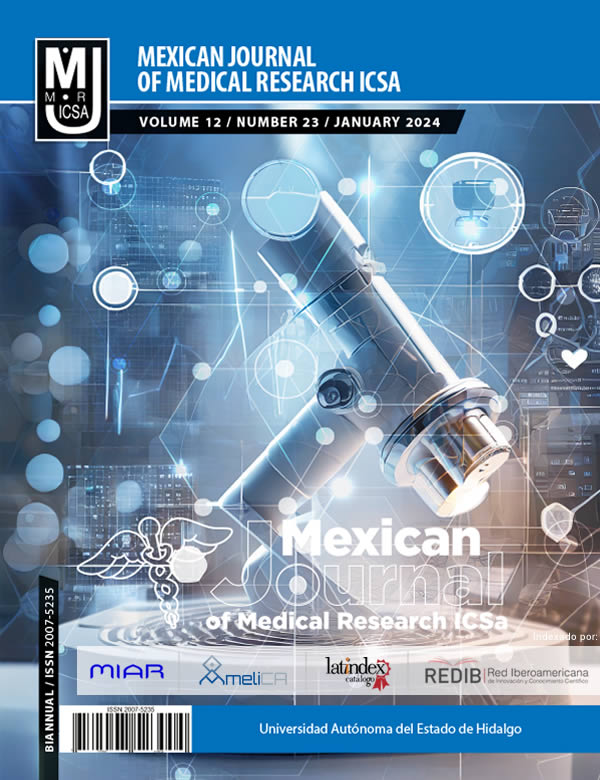Step-by-step one-way ANOVA analysis with the Jamovi program
DOI:
https://doi.org/10.29057/mjmr.v12i23.10664Keywords:
Jamovi, Variance, ANOVAAbstract
ANOVA is the acronym for Analysis of Variance, which stands for Analysis of Variance, and is used to establish statistically significant differences between the means of two groups. Currently there are several programs that synthesize this work allowing us to analyse statistical data in a simpler way. In this manuscript we will address a one-way or one-factor analysis of variance, which means that we must have an explanatory variable, also known as an independent variable, which must have two or more categories, we must also have a dependent or response variable of the type quantitatively discrete, in a fictitious case we will observe with this method how the independent variables shifted to the dependent variable, using the JAMOVI program, which is a free and easy-to-install advanced calculation program that allows the creation of complex statistical calculations efficiently. for manipulation, filtering, selection and combination of data.
Downloads
Publication Facts
Reviewer profiles N/A
Author statements
- Academic society
- N/A
- Publisher
- Universidad Autónoma del Estado de Hidalgo
References
Mishra P, Singh U, Pandey CM, Mishra P, Pandey G. Application of Student's test, analysis of variance and covariance. Ann. Card. Anaesth. 2019; 22(4): 407–11.
Hazra A., Gogtay N. Módulo 3 de la serie Bioestadística: Comparación de grupos: Variables numéricas. Indio J. Dermatol. 2016; 61:251–60.
Hlávka Z, Hlubinka D, Koňasová K. Functional ANOVA based on empirical characteristic functionals. J. Multivar. Anal. 2022;189:12-8.
Potts D, Schmischke M. Interpretable Transformed ANOVA Approximation on the Example of the Prevention of Forest Fires. Front. Appl. Math. Stat. 2022;8:1-8.
Jamovi - open statistical software for the desktop and cloud [Internet]. Jamovi.org. 2022. Available from: https://www.jamovi.org/
Lamboni M. Weak derivative-based expansion of functions: ANOVA and some inequalities. Math. Comput. Simul. 2022;194:691-718.
Zondervan-Zwijnenburg M, van de Schoot R, Hoijtink H. Testing ANOVA Replications by Means of the Prior Predictive p-Value. Meta-Psychology. 2022;6.
Borgonovo E, Li G, Barr J, Plischke E, Rabitz H. Global Sensitivity Analysis with Mixtures: A Generalized Functional ANOVA Approach. Risk Analysis. 2022;42(2): 304-33.
Şahin M, Aybek E. Jamovi: An Easy-to-Use Statistical Software for the Social Scientists. Int. J. Asst. Tools Educ. 2019;4: 670–92.
Acutis M, Tadiello T, Perego A, di Guardo A, Schillaci C, Valkama E. EX-TRACT: An excel tool for the estimation of standard deviations from published articles. Environ. Model. Softw. 2022;147: 105236.
Sánchez Villena A. Uso de programas estadísticos libres para el análisis de datos: Jamovi. Rev. Perspective. 2019;20(1):112-4.
Bax L, Yu LM, Ikeda N, Moons KGM. A systematic comparison of software dedicated to the meta-analysis of causal studies. BMC Med. Res. 2007; 7:40.
Castejón J, Ríos J, Sánchez E, Maurandi A. Didáctica de las matemáticas, software libre y desarrollo de recursos mediante Learnr y Shiny. Educateconciencia. 2021: 29(31), 101-121.
Strunk KK, Mwavita M. Design and analysis in educational research using Jamovi: ANOVA designs. Design and Analysis in Educational Research Using Jamovi: ANOVA Designs. Routledge Londres; 2021. p. 1-32.
Santabárbara Serrano J, Lasheras I. Docencia de Bioestadística en Medicina con software gratuito Jamovi: una ventana de oportunidad. Rev. Esp. Educ. Méd. 2020; 1:9-10






















